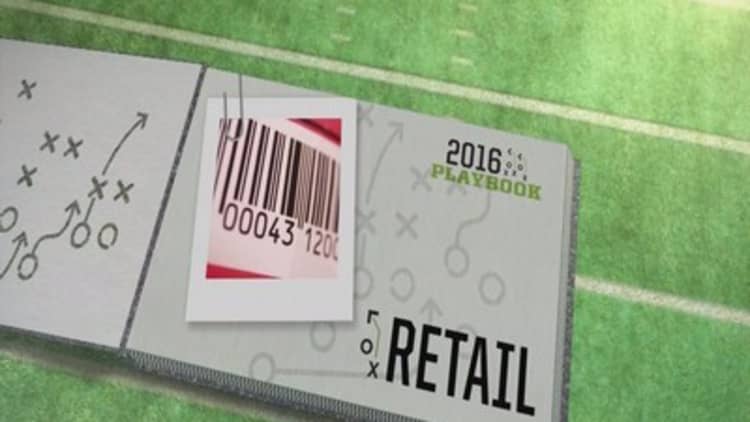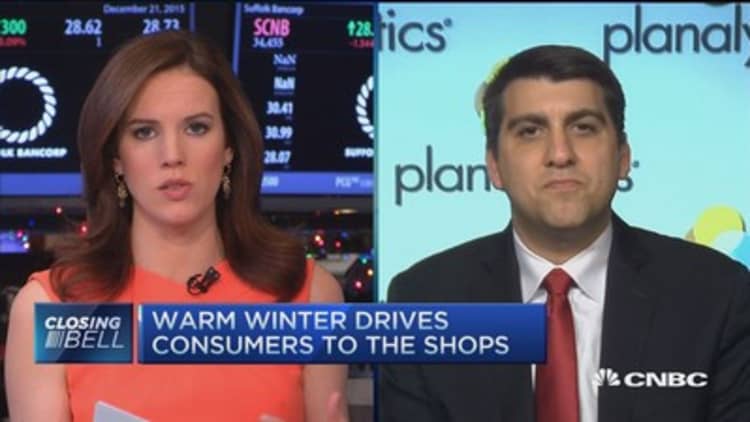
Unseasonably warm temperatures caused specialty apparel retailers to lose more than $500 million in sales this holiday season.
But while the arrival of colder weather in the New Year should finally provide a boost to cold-weather apparel, analysts said any spike in demand would be too little too late.
Further adding to retailers' woes are predictions that spring will get off to an unusually cool start across much of the country, which could cause an even bigger blow to apparel sales than the warm December.
"Winter is coming," said Scott Bernhardt, president of Planalytics, a consulting firm that analyzes the effect of weather on consumer demand. "But it's not going to be enough to make up for missing the holiday season."
According to Planalytics, specialty apparel stores lost $421 million in sales due to weather between Nov. 1 and Dec. 19. That number ballooned to $572 million by the end of December — and it doesn't even account for the losses at department stores.
These retailers are also expected to report anemic sales during the fourth quarter, with Macy's CEO Terry Lundgren warning in November that consumers would have a "field day" this holiday shopping season, as the company would be forced to slash prices to get rid of its excess inventory.
Planalytics' data show that demand for outerwear declined 10 percent nationally in December, compared to last year, while demand for knitwear fell 6 percent.
Bernhardt attributed the hit to the fact that so many of the major population centers in the eastern two-thirds of the U.S. — including New York, Philadelphia and Washington, D.C. — were on track to post record or near-record high temperatures for November and December.
Cooler temperatures in the West haven't been enough to counteract these highs, as they're still warmer than those typically experienced in other parts of the country, Bernhardt said. Also, the regions aren't as heavily populated.
Bernhardt said retailers will have no choice but to continue slashing prices on their winter goods, or sell the items to off-price stores such as TJX for "pennies on the dollar."
If they were to have severely discounted winter merchandise on their shelves when spring shipments arrive in late February, it would be nearly impossible to sell their new products at full price.
"They'll be practically giving it away, but they'll clear it," Bernhardt said. "The level of markdown that you're going to see … we haven't seen that in a very long time."
Ron Friedman, national leader of Marcum's retail and consumer products group, said prior to the New Year that he was already receiving daily emails offering 50 percent to 70 percent off.
Still, Paul Walsh, vice president of weather strategy at The Weather Company, said he doesn't expect fourth-quarter sales to come in as weak as many expect. Although it was warm, Walsh said, it wasn't snowy on the weekends. Heavy snow is what typically keeps shoppers inside and out of the stores.
What's more, Walsh said the weather comparison to last December is "not very difficult," as it was the second-mildest December on record.

He cautioned, however, that the start to the spring selling season could be as negative for retailers — if not more so — than the winter months have been.
That's because El Nino, the same weather pattern that's plagued retailers this winter, is expected to create cool conditions across the southern third of the U.S. and California through April, with a mild and stormy start in the northern third of the country.
"Combined with an early Easter, this means the start to spring buying will likely be delayed in the areas that traditionally sees the earliest start of spring," Walsh said. That includes the Gulf Coast and California, though he added that a mild March in Chicago is typically too cold to trigger full spring demand.
"I'm not very bullish on the weather for the start to spring," Walsh said.
Marcum's Friedman said that businesses in California have been projecting the effects of El Nino, and will make adjustments heading into spring. He predicted rain gear, coats and jackets will all be strong sellers there.
But while unseasonably warm winter temperatures forced many retailers to cancel late-in-the-season orders, hurting suppliers in the process, he does not expect that to translate to big cancellations for spring.
"Realistically they need their spring inventory," Friedman said. "Where it impacts [them] is when they start booking their fall business for next year … that inventory will force them probably to think more conservatively next year."
Update: This story has been updated with Planalytics' final December sales numbers.





